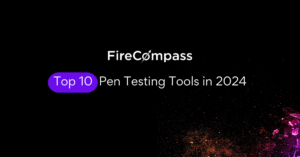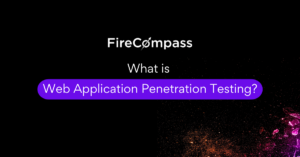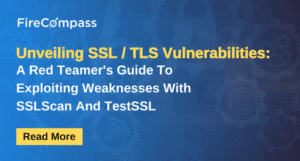
Unveiling the Trojan Horses Within: Navigating Insider Threats in Your Organization
In the vast arena of cybersecurity, while external threats often take the spotlight, a stealthier danger lurks within the very fabric of organizations—the insider threat. Imagine the security gates wide open to those deemed trustworthy, yet harboring the potential to wreak havoc or inadvertently expose vulnerabilities.
Insider threats aren’t merely a cautionary tale; they’re the clandestine operatives working within, capable of bypassing traditional defences and causing substantial damage. These threats encapsulate not just malicious agendas but also unsuspecting missteps that can shake the very foundation of an organization’s security.
Join us on a journey through the covert realm of insider threats, where the challenge lies not just in recognizing the villains but in deciphering the nuances of human behaviour and access privileges. Together, we’ll unveil the cloak of anonymity surrounding these threats and equip you with the knowledge to fortify your organization’s defences from within.
Importance of Addressing Insider Threats
Understanding and addressing insider threats are paramount for several reasons. Firstly, they represent a distinct and complex challenge that traditional cybersecurity measures often struggle to counteract. While external threats are recognizable and, to some extent, easier to defend against, the risks posed by individuals with legitimate access pose a more nuanced danger.
Moreover, insider threats can be exceptionally damaging, not just in terms of immediate financial losses but also regarding reputation, intellectual property, and regulatory compliance. The fallout from an insider threat incident can be far-reaching, impacting trust, customer relationships, and the overall stability of an organization.
By acknowledging the significance of addressing insider threats, organizations can proactively implement strategies and measures to mitigate these risks, fostering a more robust security posture and safeguarding their assets against a range of potential vulnerabilities.
Types of Insider Threats
Malicious Insiders
Malicious insiders are individuals who exploit their access for personal gain or to harm the organization. Real-life cases highlight their methodologies and the far-reaching consequences:
Examples and Case Studies
Edward Snowden’s NSA Leaks
Edward Snowden, a former NSA contractor, gained access to highly classified documents and leaked them to journalists. This act unveiled extensive government surveillance programs, causing a global uproar and debates about privacy and security.
- Background: Snowden’s access as a contractor granted him entry to sensitive NSA databases.
- Methodology: He strategically collected and disseminated classified information to the media, revealing mass surveillance programs.
- Impact: The leaks triggered worldwide discussions on government surveillance, privacy infringements, and the balance between security and civil liberties.
- Consequences: Snowden faced legal repercussions, including charges under the Espionage Act and asylum in Russia.
Tesla’s Insider Sabotage
In a notable incident, a Tesla employee engaged in deliberate sabotage against the company:
- Incident Overview: An employee with access to Tesla’s systems and data engaged in unauthorized activities.
- Actions Taken: Deliberate tampering with systems and sharing sensitive data externally.
- Consequences: Tesla took legal action, including a lawsuit against the individual, highlighting the repercussions of insider sabotage.
- Impact: The incident raised concerns about insider threats in tech companies and emphasized the need for robust internal security measures.
These case studies emphasize the far-reaching consequences and complexities associated with insider threats, showcasing how individuals with authorized access can pose significant risks to organizational security and integrity.
Accidental Insiders
Accidental insiders pose risks due to unintended actions or oversights:
Unintentional Risks
- Email Mishaps
- Scenario: An employee inadvertently sends sensitive information, such as financial data or login credentials, to an unintended recipient due to autocomplete errors or selecting the wrong contact.
- Impact: This can lead to data exposure, compliance issues, or even potential breaches if the recipient is unauthorized.
- Misconfiguration Errors
- Scenario: Improperly configuring servers, databases, or cloud storage without adequate access controls, leading to unintentional public exposure of sensitive data.
- Impact: Exposing data to the public internet increases the risk of unauthorized access or exploitation by threat actors.
Causes and Common Scenarios
- Lack of Training
- Root Cause: Employees not sufficiently trained on security best practices, including proper handling of sensitive data, recognizing phishing attempts, or understanding data classification.
- Scenario Impact: Without proper training, employees may inadvertently mishandle data, leading to vulnerabilities.
- Inadequate Policies
- Root Cause: Unclear, outdated, or nonexistent organizational policies regarding data handling, access control, or incident response.
- Scenario Impact: Lack of clear guidelines increases the likelihood of errors, as employees might not be aware of the correct procedures to follow.
Technologies and Tools for Insider Threat Prevention
User and Entity Behavior Analytics (UEBA)
UEBA solutions monitor user behaviour and entity activities to identify anomalies and potential insider threats:
- Behaviour Analysis: Tracking user actions, access patterns, and deviations from normal behaviour to detect potential threats.
- Entity Analysis: Examining the behaviour of devices, applications, and systems to identify unusual activities or compromised entities.
Data Loss Prevention (DLP) Solutions
DLP tools focus on preventing unauthorized data exfiltration and leakage:
- Content Inspection: Monitoring and controlling data transfers to prevent sensitive information from leaving the organization.
- Policy Enforcement: Enforcing policies that dictate how data should be handled, accessed, and shared across the network.
Encryption and Access Control Mechanisms
Implementing robust encryption and access control measures is vital in safeguarding sensitive information:
- Encryption Protocols: Securing data at rest and in transit through encryption techniques, limiting unauthorized access.
- Access Control: Implementing role-based access controls (RBAC) and least privilege principles to restrict access based on user roles.
Conclusion
Insider threats pose multifaceted risks to organizations, encompassing both intentional and unintentional actions that can result in financial losses, reputational damage, legal consequences, and regulatory violations. They are an ever-present concern, requiring a holistic approach that combines technological advancements, employee education, and proactive strategies to safeguard organizational assets and uphold a resilient security culture.
Additional Resources
- Cybersecurity and Infrastructure Security Agency (CISA): Offers guidance, resources, and best practices to enhance cybersecurity, including insights on insider threats.
[CISA – Insider Threats](https://www.cisa.gov/insider-threats)
- National Institute of Standards and Technology (NIST): Provides cybersecurity frameworks and publications addressing insider threats and risk management.
[NIST – Insider Threats](https://www.nist.gov/topics/cybersecurity/insider-threats)
- Verizon Data Breach Investigations Report (DBIR): An annual report offering comprehensive insights into cybersecurity threats, including data on insider threats and mitigation strategies.
[Verizon DBIR](https://enterprise.verizon.com/resources/reports/dbir/)
- CERT Insider Threat Center: Research and publications focused on insider threats, offering valuable insights and best practices.
[CERT Insider Threat Center](https://www.cert.org/insider-threat/)
5.SANS Institute: Offers various cybersecurity courses, including specific training on insider threat detection and prevention.
[SANS – Insider Threat](https://www.sans.org/cyber-security-courses/?focus-area=insider-threat)
These resources offer diverse perspectives, frameworks, and training opportunities that can aid in understanding, preventing, and responding to insider threats within organizations.
Blog By
Author: Rishabh Katiyar Assisted By: Arnab Chattopadhayay
About FireCompass:
FireCompass is a SaaS platform for Continuous Automated Pen Testing, Red Teaming and External Attack Surface Management (EASM). FireCompass continuously indexes and monitors the deep, dark and surface webs using nation-state grade reconnaissance techniques. The platform automatically discovers an organization’s digital attack surface and launches multi-stage safe attacks, mimicking a real attacker, to help identify breach and attack paths that are otherwise missed out by conventional tools.
Feel free to get in touch with us to get a better view of your attack surface.





